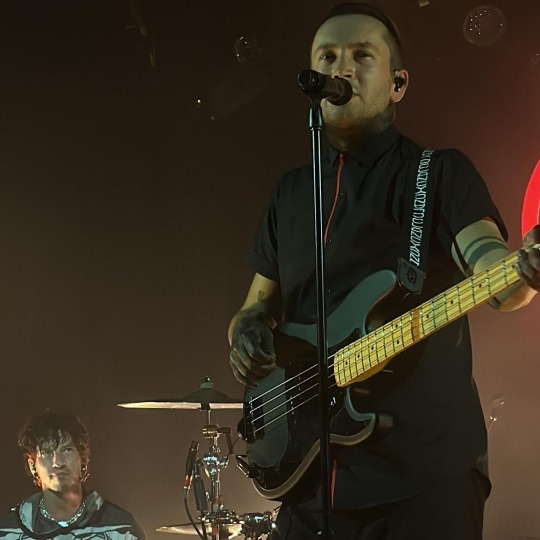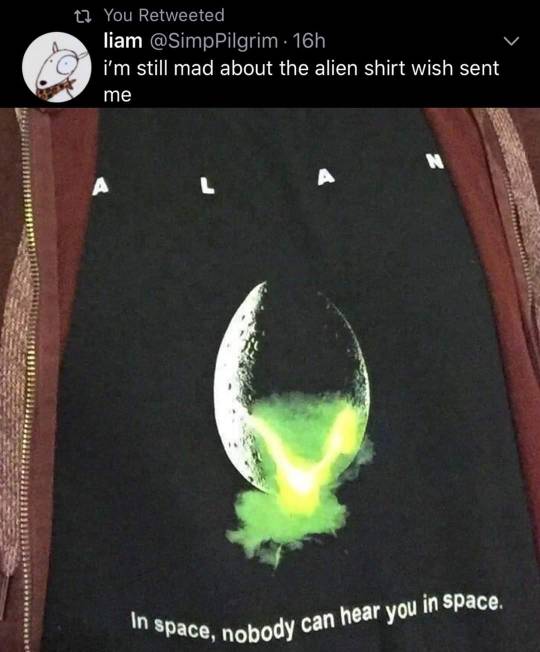Text

patron saint of the lonely and desperate
6K notes
·
View notes
Text
Gen's Top 100 DBDA Fics - PART 3
For all caveats/rules/backstory, please read the Master Post
Done Running By: Asidian @asidian Rating: T Tags: Injury, Caretaking, First Aid, Past Torture, Trauma, Hurt/Comfort Summary: Charles has gone a peculiar off color, all the blood blanched from his cheeks. He glances to the arm, and then back up to Edwin's face. "Any break's a bad break, innit?" "Some have more drawbacks than others," says Edwin, detached and scholarly. "For instance, unless the nerves are compromised, it is possible to make use of the injured arm in cases of extreme –" "Bloody hell," breathes Charles. My Notes: Any fic that discusses Edwin's Hell trauma is going to get my attention, but this one grabbed me and wouldn't leave my brain. Plus Charles fussing over an Edwin who doesn't really understand that he's been horribly injured is great.
dulcet tones of broken bones By: gremlininthemachine @gremlininthemachine Rating: M Tags: Hurt/Comfort, Suicidal Thoughts, Suicide Notes, Religious Guilt, Angst, 13 Reasons Why, PTSD, Verbal Humiliation Summary: Object: cardboard shoe box, pilfered from Crystal's overflowing wardrobe; location: the London office, on top of their desk; box contents: several labeled cassette tapes enclosed in plastic cases, along with a handwritten note in perfect script; note contents: "Dead Boy Detective Agency - Recorded explanation for my unannounced absence is enclosed. Sincerely yours, Edwin Payne" | Or, the fic where Edwin no longer wants to exist and seeks to make that reality. Inspired by Thirteen Reasons Why, knowledge of series canon not required. My Notes: Warning - This one is HEAVY. I really liked the world building in terms of Edwin's various reasons and this is another one that broke my heart a little bit.
even still, my heart calls your name By: imnotcryingipromise Rating: T Tags: Whump, Hurt/Comfort, Angst, Protective Edwin Payne, Protective Charles Rowland Summary: "Did you forget something?" Crystal asks, fondly, reaching a warm hand upward to cradle the boy by the cheek. Charles pulls her fingers from his face distractedly, eyes scanning the room around them as if in waiting. "Where's Edwin?" he questions, emphatically, his corporal heart slamming against his ribs with even the utterance of the other boy's name. "Edwin, who?" the psychic responds, uncertainly. *** During a particularly confounding case, the Dead Boy Detectives decide (unadvisedly) to split up in order to expedite their investigation. Whilst Charles is mysteriously transported to his so-called ‘perfect life,’ wherein is alive and human and older than he ever truly got to be, Edwin must fight to protect his best friend’s truthfully unconscious form and prevent him from being fed upon by an unknown, inhuman entity. My Notes: A fic inspired by the Djinn episode of supernatural?! Sign me up! If you know anything about how that episode goes, you know it is a fantastic piece of television that this fic perfectly manages to capture.
everything has its place (i go with you) By: gaywat9000 Rating: T Tags: Love Letters, Established Relationship, Domestic Fluff Summary: An enchantment gone wrong leaves Edwin and Charles stranded on opposite sides of a mirror unable to cross back through. My Notes: This is the “boys texting/sending letters” fic you’ve all been waiting for and it is fantastic.
fear is the heart of love By: lesbicosmos @lesbicosmos Rating: T Tags: AU - Canon Divergence, Hurt/Comfort, Protective Charles Rowland Summary: what if, while esther was torturing edwin with her machine in episode 8, he screamed out specifically for charles? well, charles simply wouldn't be able to handle that without doing something about it. My Notes: The 'Charles saves Edwin from Esther' fic of my dreams!
First to Fall, Last to Know By: 1Temmie_Official1 @clive-staples-lewis Rating: T Tags: AU - Canon Divergence, Protective Charles Rowland, Hurt/Comfort, Angst, Love Confessions Summary: Instead of Crystal hearing her mother’s voice at the top of the light house, Charles hears Edwin’s. It changes a few things. My Notes: This is one of the ones I have reread a thousand times. The way the moment when Charles hears Edwin's voice at the top of the lighthouse is written makes my stomach flip every time.
follow you to the end of time By: hotchocolatedictator @frogsondeckchairs Rating: T Tags: AU - Canon Divergence, Hell, Hurt/Comfort, Torture Summary: Charles finds Edwin in Hell every time, and every time Edwin follows him. This is not necessarily the wisest option. Or, what if I took Edwin's second time in Hell and made it worse? My Notes: Hell making fake copies of Charles to torture Edwin with is truly twisted. Hats off
Forever Isn't Long At All - Series By: engineering_madonna Rating: T-M Tags: Slow Burn, Friends to Lovers, First Kiss, Protective Charles Rowland, Temporary Amnesia Summary: Forever and Ever is a Very Long Time - "In all the sorrow and pain that came with the realization that everything they’d built in recent times would end, Edwin was infinite." It's been four years since everything changed in Port Townsend and the Dead Boy Detective Agency has really settled into itself. Everything great until Charles is left with an epiphany that may or may not make him question his feelings for Edwin and whether what he feels is platonic after all. At the same time, a new case arrives and the crew must solve the murders of two young teens looking for closure for the sole survivor of a séance gone wrong. Growing Pains - Edwin crosses his arms and scowls. “This is completely out of our purview.” Charles tries not to roll his eyes and instead runs his hands up and down Edwin's arms in an attempt at comfort. It seems to work a little as Edwin's stiff posture becomes…well, still stiff, but less so. “I know, love, but stealing from the British Museum sounds pretty brills, don't it?” Edwin scoffs. “We are not thieves.” “Babe,” Edwin raises an eyebrow at the pet name and Charles really does roll eyes this time, “it's not thievery if you steal from thieves.” - Edwin and Charles are dating, which is aces if you ask Charles. There's just some growing pains when you go from best friends to boyfriends. To Memory Now I Can't Recall - "Don't ever let me forget this, he'd pray to whoever may or may not be listening, let me keep just this bit." An accident while investigating a series of deaths linked to a dangerous memory elixir leads to Edwin losing the last five years of his memory, including his relationship with Charles. As Charles does his best to juggle his boyfriend turned best friend again and solving the case, it becomes apparent that this is now a race against time. My Notes: The boys work on sorting out their feelings and solve some cases together? Sign me up! The thrid fic in particular is my favorite of the bunch. That one deals with memory loss and the angst that comes with that is divine.
Form 239, Schedule L By: sanctuary_for_all @sanctuaryforalluniverses Rating: T Tags: Established Relationship, Feels Summary: At the top of a small pile of papers was a copy of Form 239, Schedule L, filled out with achingly familiar handwriting. At the top, the word "Approved" was stamped in large red letters. My Notes: Charles filed the paperwork to save Edwin from Hell??? This is so damn cute.
frozen hearts By: owlberry @owlberries Rating: G Tags: Sickfic, Angst, Hurt/Comfort, Fluff, Protective Charles Rowland Summary: “Charles…” The voice is so small, Charles barely hears it over his own shouting. If he hadn’t spent thirty years giving the whole of his attention to that one little word spoken by that one little voice, surely it would’ve been lost to the lazy lapping of the waves. Instantly, Charles turns back to Edwin. “Hey, mate, I’m right here.” Charles reassures. “You’re alright, we’re all alright, yeah? Just hang on. We’ll get you sorted.” It’s only then that Charles realizes that Edwin isn’t simply shaking—he’s shivering. “It’s cold…” Edwin whispers. - Edwin gets cursed with hypothermia. Charles repays an old favor. My Notes: Charles trauma overload! To be fair though I would also freak out if I died of hypothermia and then my best mate started possibly freezing to death. This fic also has some great cuddles
30 notes
·
View notes
Photo










Twenty Øne piløts | lyrics | blurryface
11K notes
·
View notes
Photo








“Blurryface is this character that I came up with that represents a certain level of insecurity. These symbols and having a narrative give people a reason to want to take in the whole album—not just one song. The concept of a single is still pretty foreign to us. - What I believe is very important to me, and absolutely is going to always be present whenever I create something, whenever I’m working through something. I think what someone believes can define them, even if it’s that they don’t believe anything, and for me and my faith, it will always be a big part of my music, whether it’s directly or indirectly.”
962 notes
·
View notes
Photo






best friends let you nap on their arm. they also let you listen to blurryface
3K notes
·
View notes
Text




The Dead Boy Detectives Cast at Briana Cuoco’s Wedding via Kassius on Instagram 🎉💜
391 notes
·
View notes
Text








hi josh dun i love u
514 notes
·
View notes
Text

111 notes
·
View notes
Text




Telling my children this was the love of my life who went to war and never came back so I had to marry their idiot father instead
78 notes
·
View notes






















